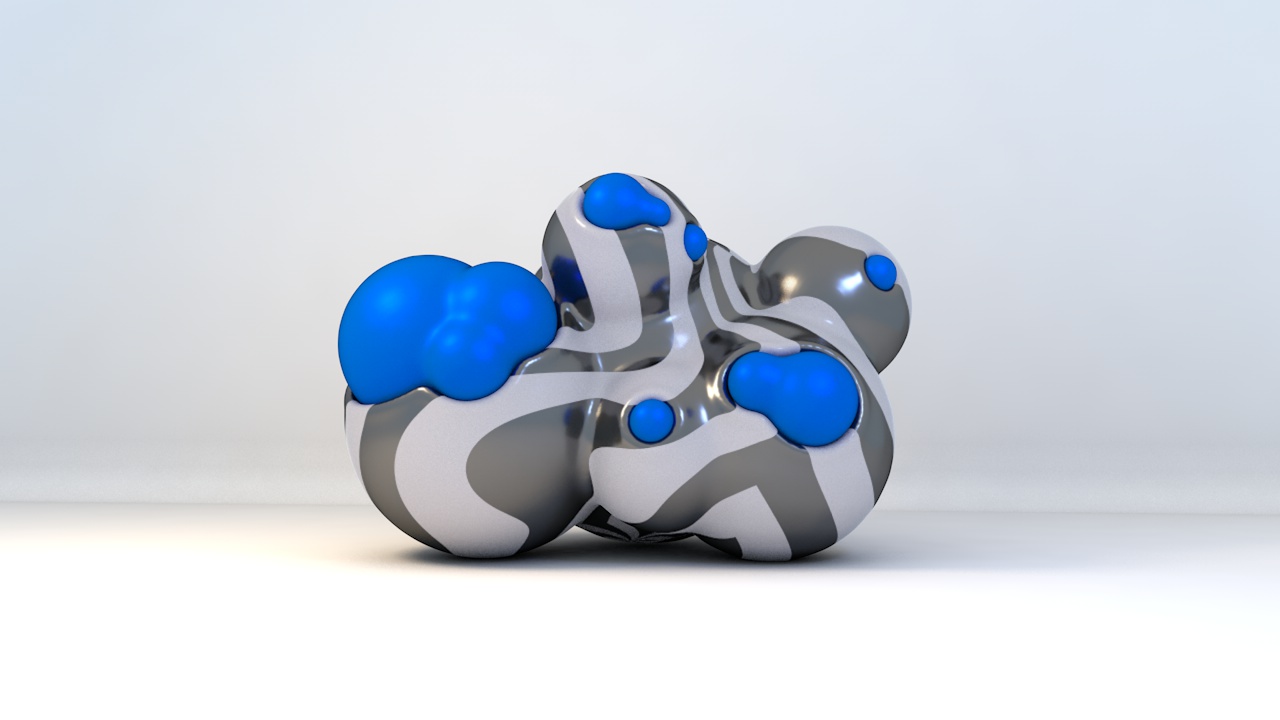-
Posts
2,001 -
Joined
-
Last visited
-
Days Won
111
Everything posted by HappyPolygon
-
Have you tried using the Collider Deformer ?
-
Thank you CBR, I'll then stop exporting and using OBJs in favor for FBX. For some reason I thought FBX was older than OBJ.
-
Does anyone know why FBX files are so smaller than OBJs ? Is there some kind of compresion involved or is OBJ superior ? - Couldn't find a suitable category for posting this...
-
I haven't noticed anything radical that wasn't already possible with TPs. By porting I meant porting the functionality/features. It's very possible they've re-written particles code to make it better as well as accessed by entities like effectors outside XPresso. The banana teaser was impressive but it was prerendered. We don't know how fast it runs in the viewport. Hopefully they have upgraded the particle system to be multithreded which I think it's not. But it could also just be that they made instance simulations faster with the upgraded viewport and what we saw was instanced spheres not particles... I didn't think of that that way. I thought they were referring to the spline, soft-body, rigid body triad that is based on some kind of particle springs... I do remember suggesting they make Pyro interact with objects like torching a ball really intensely to make it move like as blowing air towards it but I don't know if this is even technically possible as Pyro is a voxel system... maybe it is possible only indirectly if you use the Pyro as a Force Field, I don't know. I've never heard or seen such an interaction between voxels and polygons, transfer of energy that is.
-
Judging only from what McGravan has shared, this is not wat will happen. All I see is an easier way to access the capabilities of Thinking Particles "porting" them to the standard model. For example XParticles offer APIC and FLIP simulations, particle caching, compatible with native rendering as well as Cycles4D rendering, XParticles contain extra data like temperature for fire and smoke simulations. C4D's Pyro system is purely voxel based (not driven by particles). I guess you will still be able to recreate the xpPushApart and xpFlock effect but slower. We haven't seen any equivalent of the xpInfectio modifier. Also I have no idea about what the Rigid and Cloth dynamics XParticles offer and how they compare to C4D's simulations. So it is possible that XParticles still provide a better engine for those. But if you don't rely on the above for your job you can safely abandon it. The only thing I'm definitely uncertain about is how this will compare with the xpFluidFX Granular solver in terms of viewport refresh rate. The banana teaser was impressive. Could there be a big surprise announcing the acquiring of XParticles from MAXON and all we see is XParticles icons redesigned ? I doubt that. It would be much more realistic to acquire the bankrupt U-render than Insydium.
-
Ah ! sorry, didn't see the scene file and assumed the deformed thing was the plane ... Umm... you've mixed two different simulation methods. The Sphere has a tag from the Bullet system while the Plane has a Collider tag from the newer system. You'll never see the sphere collide with the floor this way But the weird deformation wasn't attributed to that. You had the "Self Collisions" enabled.
-
Latest video revealed a new generator: - Probably an omni emitter
-
It's nice they decided to update the particle system. Standard particles were too limited, Thinking Particles were too complicated. It's very fitting for a X.5 release. Unfortunately I sense a big catch to this story... Up to this moment the only way to render particles was through Sketch&Toon. Rendering particles with shadows and diffusion is a RedShift thing. So anyone who's still unfamiliar with RedShift like me will eventually need to learn it.
-
I get this did he remove it ? Most recent posts with particles I found were these
-
What exactly did you expect to happen ? I find completely normal this result
-

Maxon shooting themselves in the foot: Educational Licenses Suspended.
HappyPolygon replied to No One's topic in Discussions
Sorry missed that Maya has a better UI ? -
- 3 replies
-
- Maxon
- Blender Fundation
-
(and 1 more)
Tagged with:
-

Maxon shooting themselves in the foot: Educational Licenses Suspended.
HappyPolygon replied to No One's topic in Discussions
Wait a minute .... What about Rhino, Coat3D, Marvelous Designer, Houdini, RealFlow, Vue, 3DMax, Maya, Substance Designer, Fusion, MODO and others ? Not to mention all the available render engines. Are all these also being taught in schools (meaning Universities) provided they offer free student licenses ? Is Blender only a threat to C4D ? Excuse me but I don't see any reason for the "No students = no future users" to be even remotely related to reality. Also pardon my ignorance because I was never a student in any 3D arts department so I have to ask to be properly informed, am I correct to say the following: CG is not like any other traditional art. you don't just take up paint and brushes (which by the way also cost to add relevance to the discussion) without really caring about the brands of those tools. Every 3D DCC is different in its own ways (capabilities, difficulty etc) so you could say that in some way there is no 3D arts department in the world that is not biased towards the principals/methods in teaches 3D staff because everything is dependent on what software you are using. A good analogy would be a political sciences department that although supposedly should teach comparative politics and all available political systems instead it chooses to have more classes towards the current political system, for example if that department is based in based in a university in China it is more likely that it will contain mainly communistic classes in its syllabus. Or having a conservatist teacher being more inclined teaching his own political beliefs instead of being unbiased. So depending the country (low/high GDP) and status of the arts department (public, private etc) it is expected to teach more or less expensive software and because software is not like paint and brushes there is a bit of "corruption" in the sense the syllabus won't be neutral or software-agnostic but even promoting certain software over others. So anyway I believe that because of that "neutrality" Blender, being free, is preferred most over other software in most departments and will gain more and more acceptance over everything. Being free makes you unbiased. It's not that much of an "expenses" concern for either students or departments because as I've mentioned, traditional artist students also have their student expenses as student cooks (uniform/suit, knives and other tools) or even chemistry students (buy their own protective suits or goggles), civil engineers I believe still buy their own special drawing boards and markers for technical designs before moving to CAD (big ecosystem of software here too). So in order for an arts department to maintain its pure academic spirit and not spoil its image by rumors of corporate manipulation it ought teaching a non-commercial software, especially if it's a public school. If Blender really deterred future professionals from using other software then those other software would stop existing years ago. I personally find Blender a hard-to-follow software. It updates so often that it's hard for me to learn. What I knew about it 3 years ago now might be completely irrelevant, the tools knew might have changed names, changed icons, changed shortcut keys, hell even changed position on the interface and layout and that's not happening every 3 years but constantly for every new version. I have Bforartists which is more "stable" visually and has fewer updates (still never use it 😂). How do teachers and students even cope with this rate of cumulative updates ? do you change the course syllabus every semester to keep up-to-date ? -

How to fix a completely skewed topography of a 3D model
HappyPolygon replied to Jonas Dahl's topic in Cinema 4D
To be honest it doesn't look that bad... Well, get your knife, turn some polygons to N-gons, some edges have to be redrawn strategically to fill polygons better, some points might need to be welded, some triangles need to be melted to rectangles for better visibility. You might need to split the mesh in more objects like the window in the last image, and retopologize them separately. Some of those will be hard to unify with the rest of the building when connecting in the end, but it's still doable. I don't think you can avoid manual reconstruction here. I'm not a pro modeler but these are the tools and guidelines I use to this type of job: List of tools needed by decreasing frequency: The last step is to realign normals because they tend to get messed up depending in which direction you bridge polygons. And at all times have your Snapping enabled Golden rule: Never delete a point from the edge of the shape if you are not 100% you won't be needing it later. I find it impossible to create orphan points where I need them and then use them to draw polygons. So I always use existing points and polygons to reconstruct the topology. If I need a new point I create it by cutting an existing edge from a polygon. Caution: Always pay attention to the Visible Only and Restrict to Selection options on your tool of choice! You don't want ending up slicing and mincing everything behind or beyond your point of interest. Expert modelers use mostly the Polygon Pen since they commit on reconstructing everything from scratch. I'm too lazy to do that. -
Octane can render 3D fractals Cinema has a native Mandelbulb in SceneNodes but doesn't look like the mandebulb on other applications... Or you could composite using 3rd party apps like this and this
-
I've figured out how to move points on the spline. Any idea about editing the tangents ? one more thing... Don't vectors have negative values ? Ignore the Limit Min in the following image... My point on the spline wont go bellow 0 when i input a negative number... instead it starts going up again as if i've implemented an abs() function... I wanted to be able to move certain points only along certain axis so in order to do than i decomstruct the vector and reconstruct it later. Could there be a fault in the conversion ? in this example i wanted only Y to be relevant
-
I managed to move an object using a point of a spline because I can retrieve the coordinates of a point from a spline but I can't find a way to do the opposite. Any ideas? So far I can only recreate the spline with a Matrix and Tracer and have individual MoGraph selections affected by Plain Effectors and have those parameters exposed to the XPresso tag but this is too indirect and also doesnt recreate exactly the original spline as I have altered the tangents which I would also like to edit via XPresso.
-
- 3 replies
-
- Maxon
- Blender Fundation
-
(and 1 more)
Tagged with:
-
-
I found them very interesting. And I was waiting for many more. I thought you had mentioned once that the reason for not posting more stuff was thar you were busy... and since there were much going on with updates and teasers from McGarvan I just accepted the delay. If you ever feel creative and want ideas to post for your blog PM me, I might have something in mind.

